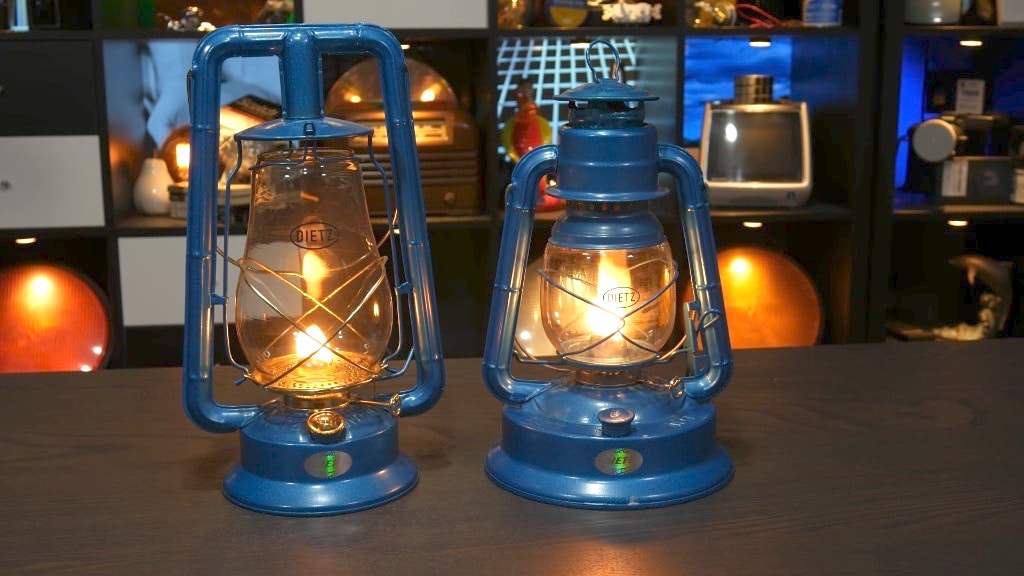The key difference in this lantern is that fresh air and spend air no longer intermingle. Hot, spent air from the flame travels up the chimney, but that chimney is actually inside this larger collar. It’s now spring-loaded to put downward pressure on the globe and keep it sealed. And the air-supply tubes are now open to the space surrounding the chimney. And the difference is significant. ….the flame of the cold-blast lantern is much whiter and brighter than the hot-blast. In fact, these lamps are burning the same exact fuel and their wicks are the same size, so the only difference between these two is the design of the lantern itself.

Watson sums up all the influences behind this strategic design.
Their knack at being wind-resistant is where they get their name from, by the way. Hurricane lanterns. ….But this very recognizable design became the de facto outdoor lantern of the country and other rural settings for decades. …The knowledge of Lavoisier’s theory of combustion, Argand’s clever hollow wick with lifting mechanism for more complete combustion and flame control, Dietz re-imagining it for kerosene and flat wicks, and Irwin’s designs for wind-resistance ultimately combined into this lantern.
Watson goes further into how the gas mantles inside incandescent lamps created increased luminescence.
Follow Laughing Squid on Facebook, Twitter, and Subscribe by Email.
The post The Strategic Design Behind Hurricane Lanterns first appeared on Laughing Squid.
0 Commentaires